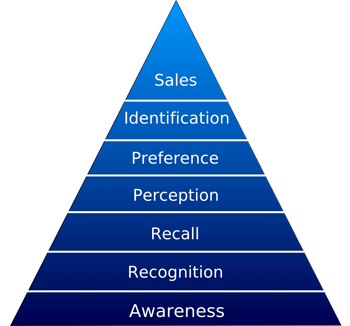What does the new research actually say?
Essentially, the Dynamic Logic report finds that:
[When used as pre-roll content, repurposed TV ads] perform just as well as video ads created specifically for the web when it comes to several brand attributes.When is TV content a good fit for DOOH?
In fact, repurposed TV ads aided brand awareness at identical levels as made-for-Web spots. In ad awareness and message association, TV spots outranked Web originals.
The story takes a turn when it comes to brand metrics lower in the purchase funnel. Original Web video ads solidly outscored repurposed TV spots in brand favorability and purchase intent/consideration.
"It was my thesis [that] made-for-Web [ads] will be more effective than [repurposed] TV ads," said Chris Bian, research analyst with Dynamic Logic's custom-solutions team. "In the end, I found it wasn't necessarily the case that repurposed was inferior. Each had their own place."
Dynamic Logic found that repurposed TV, often done as the cheapest way of running online video campaigns, works well when tactics mimic the wide-audience approach of TV. Original video works better, Bian said, when the Web's targeting capabilities are put to full use.
As Dave Haynes suggests, there are certainly some scenarios where TV content can fit nicely into a DOOH playlist. Case in point: While sitting in the doctor's waiting room a few days ago, I had little else to do other than wrangle my two-year-old (who has apparently figured out exactly what the doctor's office is all about) and watch the monitor running KidCare TV, one of the health-centric DOOH networks run by Care Media. The network uses a fairly long content format optimized for people sitting around in a waiting room. There are a good number of talking heads and health related, news-y stories along with public service announcements and commercials. While I'm sure each spot is massaged by Care Media's staff, a fair number of the ads looked like they came right off the TV. And because I was more or less a captive audience, that was OK. The screen was there for my edutainment, I had little to do but watch it, and it was better than most of the alternative distractions available (aforementioned two year old notwithstanding).

When wouldn't TV content work?
A long time ago, I blogged about the marketing funnel, which is illustrated in the diagram to the right. In particular, I considered how digital signage as a medium is mostly focused on the sales end of it, since DOOH content is frequently consumed at or near the point of purchase. TV, on the other hand, is best at establishing brand awareness and reinforcing recognition, so it's not surprising that TV content reflects that. Lengthy shots using strong associative imagery can help drive home a point or equate a brand with a way of life. But they require either a lot of viewer attention or a large number of impressions over time to accomplish the goal of moving a brand to the top-of-mind. As we move from the bottom of the funnel to the top, scene and shot duration go down, compositional complexity goes down, word count (spoken, written, or both) goes down, and font size and overall scene contrast go up. Otherwise, there's no way that a viewer (who, again is probably on the move and not giving your screen a huge amount of attention) would be able to absorb any of it.
So, can TV content perform well on DOOH networks? Yes, if it's well-selected and used under very specific circumstances. Will it work as well as properly-made, DOOH-optimized content? I'd say that for 90% of networks, the answer is "no." Of course, how large that performance gap really is depends on the type of setting that the digital signs are placed in, and the quality of the TV and DOOH ads being compared to each other. A really elaborate TV ad that relies heavily on viewer attention and audio cues will be completely lost in a digital signage network with no audio. But an equally long-form and verbose DOOH-specific ad might not do much better. As usual, the devil's in the details.
What's the best TV ad you've seen running on a digital signage network? The worst? Leave a comment (or reply to this message, if you're an email subscriber) and let us know!

 Subscribe to the Digital Signage Insider RSS feed
Subscribe to the Digital Signage Insider RSS feed
Comments
RSS feed for comments to this post